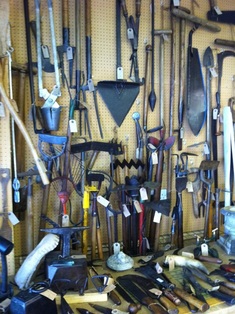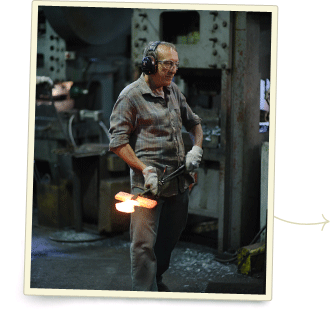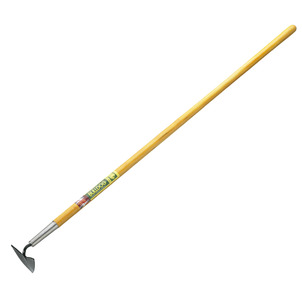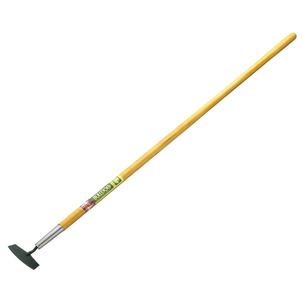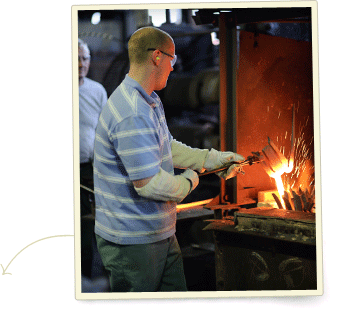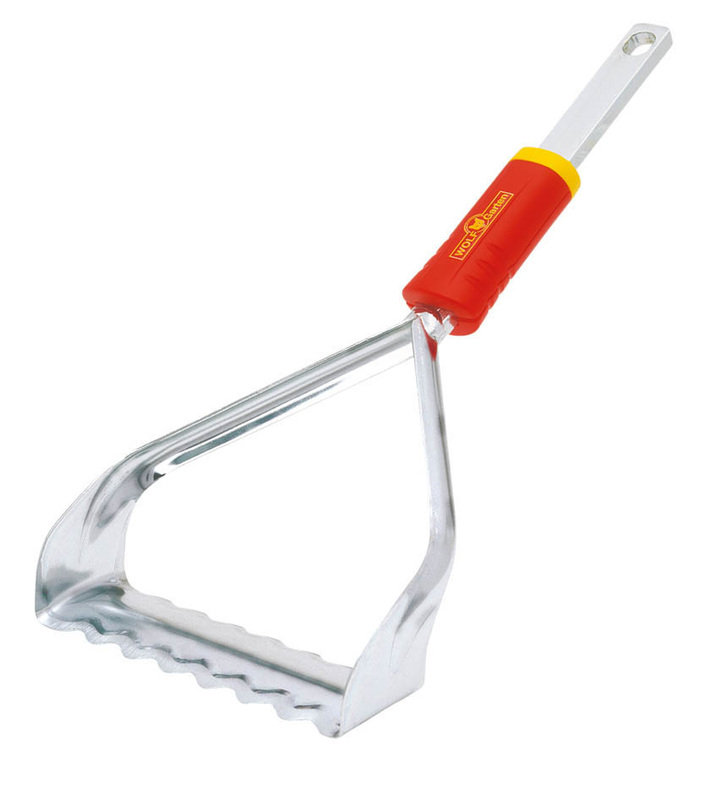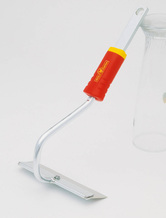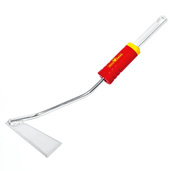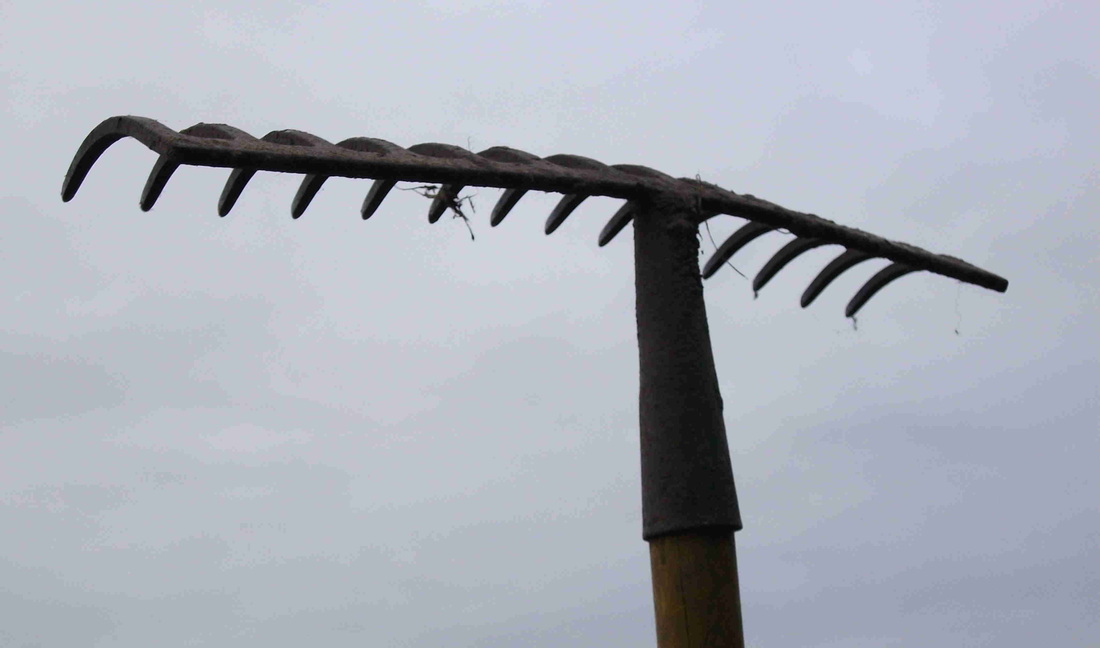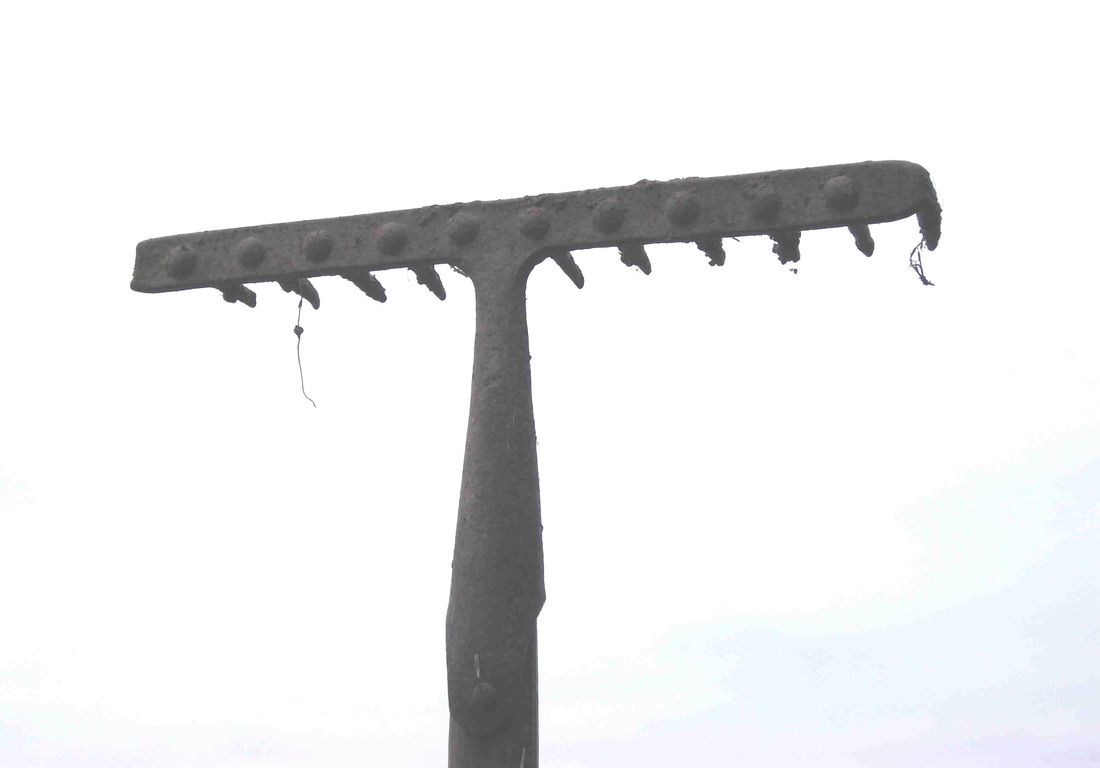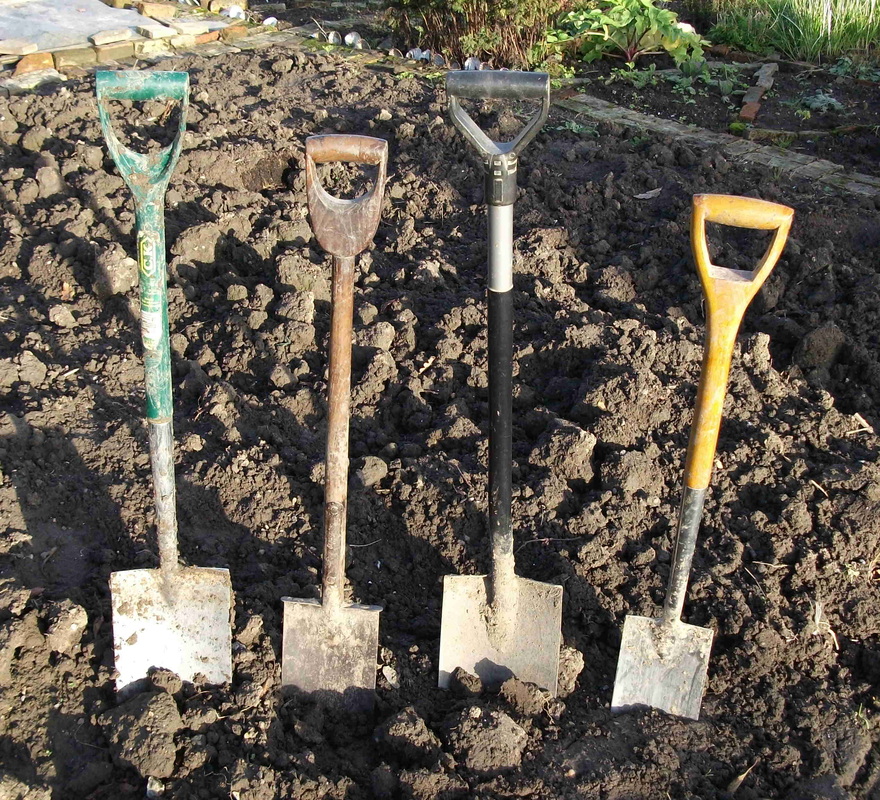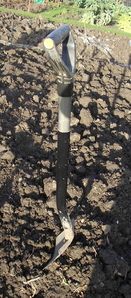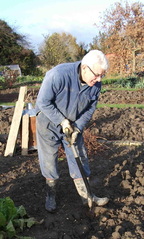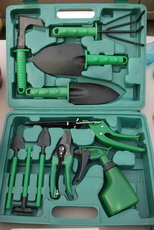They say "A poor workman blames his tools", but trying to work with poor quality tools will make the job almost impossible even for an expert.
When you are starting up, its easy to assume that the cheapest is the best value, or that the most expensive is necessarily the best quality.t
This guide is based on decades of experience using all types of tools. It doesn't necessarily agree with what you'll be told at the garden centre. But the person writing it spent years in the garden centre and horticultural trade and this is the honest truth.
When you are starting up, its easy to assume that the cheapest is the best value, or that the most expensive is necessarily the best quality.t
This guide is based on decades of experience using all types of tools. It doesn't necessarily agree with what you'll be told at the garden centre. But the person writing it spent years in the garden centre and horticultural trade and this is the honest truth.
Good quality tools will last you a lifetime
The main difference between a good tool and poor one is the quality of steel used. Many tools these days are produced in China to a budget. Forging good quality steel is an expensive business, and very cheap tools will always be made of 'mild' steel which bends easily. For some tools this doesn't matter, but for others it is critical and buying cheap might mean throwing money away. sadly, many brands which used to produce good quality tools in the UK now have them made abroad and the quality has suffered.
Some budget ranges are quite good, however, and some more expensive tools are sold on styling rather than quality. Watch out for tools with all sorts of pseudo-tradtional branding, like stained handles and appealing labels. If in doubt, look at the small print and find out where they are made, and if the 'maker's name' is in fact bit of fluff distracting you from the fact that this is 'lifestyle' branding concealing the fact that the tools are made by a well-known manufacturer.
Some budget ranges are quite good, however, and some more expensive tools are sold on styling rather than quality. Watch out for tools with all sorts of pseudo-tradtional branding, like stained handles and appealing labels. If in doubt, look at the small print and find out where they are made, and if the 'maker's name' is in fact bit of fluff distracting you from the fact that this is 'lifestyle' branding concealing the fact that the tools are made by a well-known manufacturer.
Make your money work for you.
If you invest in tools that will be good for years, you'll spend less than if you buy a succession of duds. If you want to buy cheap and are looking for the best value, don't buy all your tools from the same manufacturer.
One company which still makes traditionally forged tools in the UK is 'Bulldog'. If you're lucky, you'll find their vintage tools at bootfairs. If you want to buy new, you can find a Bulldog stockist by clicking here or buy Bulldog tools online from this website
Bulldog tools are also available from Kent Wool Growers. Click here to go to their website.
One company which still makes traditionally forged tools in the UK is 'Bulldog'. If you're lucky, you'll find their vintage tools at bootfairs. If you want to buy new, you can find a Bulldog stockist by clicking here or buy Bulldog tools online from this website
Bulldog tools are also available from Kent Wool Growers. Click here to go to their website.
ERGONOMIC TOOLS THAT SAVE YOUR BACK.
A number of tool manufacturers make tools with carefully designed curved handles. These may look odd at first, but the principle is very sound. Ergonomic handles allow you to work with your hands in the most comfortable position, and with no uneccesary bending of the back. They make the work much lighter, and both experienced gardeners and those unused to gardening will be much less likely to suffer from back pain. A number of companies make 'power spades' (not to be confused with elaborate designs which lever the soil out) and forks. As far as I know Wilkinsons are the only ones who have ergonomic hoes, rakes and cultivators. The Wilkinsons tools are at a budget price and are a good way to find out if these are the tools for you.
If you have arthritis in your hands, there is a large selection of small hand tools which will allow you to use a trowel, etc without straining the damaged joints. Try an online serach under 'ergonomic tools'
A number of tool manufacturers make tools with carefully designed curved handles. These may look odd at first, but the principle is very sound. Ergonomic handles allow you to work with your hands in the most comfortable position, and with no uneccesary bending of the back. They make the work much lighter, and both experienced gardeners and those unused to gardening will be much less likely to suffer from back pain. A number of companies make 'power spades' (not to be confused with elaborate designs which lever the soil out) and forks. As far as I know Wilkinsons are the only ones who have ergonomic hoes, rakes and cultivators. The Wilkinsons tools are at a budget price and are a good way to find out if these are the tools for you.
If you have arthritis in your hands, there is a large selection of small hand tools which will allow you to use a trowel, etc without straining the damaged joints. Try an online serach under 'ergonomic tools'
DISCOVER THE WOLF 'MULTI-CHANGE SYSTEM'
This is the answer to many an allotmenteer's prayer. Sheds aren't always secure enough to store your tools, so you need to keep them at home. This means cramming an alarming assortment of sharp pointy things on the end of awkward handles into the easily-damaged interior of your car, with all the attendant risks of them assaulting you at earhole level if you corner with too much enthusiasm. Of course, once you get there, you realise the one thing you didn't put in is the one you'll need.
The Wolf system has heads that click into (and, as quickly, out of) handles. All the heads and all the handles are interchangeable, so for example you can quickly convert a long-handled hoe into a short-handle onion hoe. In fact, hoes are the strong suit of the Wolf tool range - they have a wide selection of well-designed hoes and cultivators which will do all sorts of different things, all of them good.
In addition there are tools like pruning saws - a quick click converts a hand-held saw into a long-pole version, fruit pickers, rakes (9 different models), potato ridgers, seed-sowers you can use without bending down - in fact, anything you can think of and many more you didn't. The main drawback is that they are not cheap - if they were, the quality wouldn't be as high as it is. But some heavy hints dropped at Christmas and birthdays will make it easy for your family to find a suitable gift each year!
Click here to see the range of heads available - several web pages.
This is the answer to many an allotmenteer's prayer. Sheds aren't always secure enough to store your tools, so you need to keep them at home. This means cramming an alarming assortment of sharp pointy things on the end of awkward handles into the easily-damaged interior of your car, with all the attendant risks of them assaulting you at earhole level if you corner with too much enthusiasm. Of course, once you get there, you realise the one thing you didn't put in is the one you'll need.
The Wolf system has heads that click into (and, as quickly, out of) handles. All the heads and all the handles are interchangeable, so for example you can quickly convert a long-handled hoe into a short-handle onion hoe. In fact, hoes are the strong suit of the Wolf tool range - they have a wide selection of well-designed hoes and cultivators which will do all sorts of different things, all of them good.
In addition there are tools like pruning saws - a quick click converts a hand-held saw into a long-pole version, fruit pickers, rakes (9 different models), potato ridgers, seed-sowers you can use without bending down - in fact, anything you can think of and many more you didn't. The main drawback is that they are not cheap - if they were, the quality wouldn't be as high as it is. But some heavy hints dropped at Christmas and birthdays will make it easy for your family to find a suitable gift each year!
Click here to see the range of heads available - several web pages.
|
NEW ISN'T ALWAYS BETTER!
In general, vintage tools are better made than modern ones. When new they would have been expensive; to get the same quality today would cost you an arm and a leg. Old tools used qualities of steel and wood that would be hard to get today except from specialists. The metal parts may be hand-forged rather than mass-produced, and handles will be strong, flexible British ashwood rather than inferior imported timbers. So it is definitely well worth looking out for tools from the 50s and 60s, or even earlier. LEFT: Some weird and wonderful vintage tools at Strand Quay Antiques in Rye |
Bootfairs are a good source of vintage tools, though you will have to go week after week and keep your eyes peeled; don't expect to go once and pick up everything you need! There are a few places locally where you can pick up vintage tools too. Expect to pay more when buying in a shop, although you'll still get good value compared with new.
Old Forge Antiques, Appledore, always has a wide range of tools which go from the merely secondhand to the desirably vintage.
Strand Quay antiques in Rye has an impressive range of unusual and specialised tools from Michael Ristic
WHAT TO LOOK OUT FOR WHEN BUYING OLD TOOLS
Old Forge Antiques, Appledore, always has a wide range of tools which go from the merely secondhand to the desirably vintage.
Strand Quay antiques in Rye has an impressive range of unusual and specialised tools from Michael Ristic
WHAT TO LOOK OUT FOR WHEN BUYING OLD TOOLS
- Is the wood of the handle sound? Check for woodworm, splits and places where the wood, in aging, has shrunk away from the metal leaving a loose fit.
- Is the handle the original one? Hoes and rakes would have had a long, shaped handle, thicker at the end so your hand doesn't slide off. If this has gone, someone may have replaced the handle with a shorter, poor quality, broom handle.
- Is the metal still in good enough nick? Blades of spades and times of forks wear down with use, as do hoe heads. A little wear is acceptable, but beyond a certain point . . .
- Has the tool been slathered with paint to cover defects? Personally I'd distrust anything with a recent thick coat of paint.
- Is the handle long enough (forks and spades). Old tools may have been fitted with a short handle to accommodate a titchy previous owner. Check if the angle feels comfortable when you go to use it.
If the tool is right, don't fret that it will cost as much as a new one. It will probably last longer and be more satisfying to use.
A - Z of garden tools (still in editing)
This guide is aimed at both beginners and experts, so don't be taken aback if some of the advice seems a bit obvious. It's all based on years of experience with gardeners.
Links to websites are for illustration purposes and don't constitute an endorsement.
This guide is aimed at both beginners and experts, so don't be taken aback if some of the advice seems a bit obvious. It's all based on years of experience with gardeners.
Links to websites are for illustration purposes and don't constitute an endorsement.
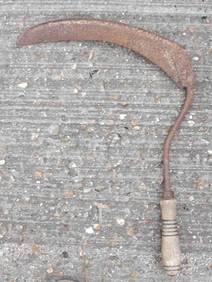
The BAGGING HOOK has been rather superceded by the strimmer, which does the same job. However, if you have a small allotment, buying a strimmer to cut the grass round the edges would be an extravagance. A bagging hook will keep rough grass cut and tidy your edges, and this is one of the easiest tools to find at a bootfair. To raise long grass without risking an injury to your other hand, cut yourself a crooked stick like our grandfathers did.
You'll need a whetstone to sharpen the blade with, as coarse grass stems swiftly blunt it. These are also to be found at bootfairs, or at a traditional ironmonger like Webbs of Tenterden, Leppers at Wye or Rolfe's in New Romney.
You'll need a whetstone to sharpen the blade with, as coarse grass stems swiftly blunt it. These are also to be found at bootfairs, or at a traditional ironmonger like Webbs of Tenterden, Leppers at Wye or Rolfe's in New Romney.
FORKS are an essential. Used for breaking up soil after digging, or freshening up soil when replanting, they come in two sizes like spades do. A full-sized fork may lift too great a weight of soil for you, if you are less than beefy. In that case, use a border fork. There is nothing in the allotment that you can't do with a border fork and you'll be saving your back.
As with spades, look for a fork with a lightweight wooden handle. Vintage forks are wonderful, with strong springy times that are forged rather than cast, and strong, elastic ashwood handles. As well as turning over the soil with a fork, it is usual to use them to break up lumps of soil by swinging the fork down and smacking them with the times. If your soil is heavy, smack with the pointed tips facing down, rather than bashing with the back of the times.
As with spades, look for a fork with a lightweight wooden handle. Vintage forks are wonderful, with strong springy times that are forged rather than cast, and strong, elastic ashwood handles. As well as turning over the soil with a fork, it is usual to use them to break up lumps of soil by swinging the fork down and smacking them with the times. If your soil is heavy, smack with the pointed tips facing down, rather than bashing with the back of the times.
|
Bulldog tools still make traditionally forged spades and forks in their Wigan forge. We can recommend them whole-heartedly, not just because we want to support British craftsmanship, but because they are really excellent, built to last a lifetime. They are a far better bargain than cheap ones which are too heavy, and bend easily.
Right - forging a Bulldog spade. Click on the pic for more. |
HOES It's amazing how many beginners try to do without a hoe. Any experienced gardener will have a favourite hoe, if not several. The hoe is used to run to and fro just below the soil surface, ruffling it up and uprooting or chopping off weeds before they get a chance to seed. Old gardeners will tell you you must "keep the hoe constantly moving between the rows". Baby weeds are chopped off and wither, to be pulled down into the soil by earthworms. the fluffed up soil surface retains moisture in dry weather, and wet weather the hoe stops the surface from panning into a compacted layer. Always have a hoe handy, and hoe the soil surface whenever the weather permits.
There are more variations on the hoe than on any other type of tool. The "Dutch" hoe is as popular as the "English" or 'swan-neck' hoe. With the Dutch hoe the main action is a pushing one, while the English hoe is pulled back towards oneself in a chopping action. The Dutch hoe works best in soils which are well broken down, while heavy clay is easier with an English hoe. A 'side-hoe', patent versions of which are sometimes called a "swoe", has a blade which is attached to the handle by a single bar. It is one the best to use - very precise and ultra-lightweight, placing no strain on your back. An "onion hoe" has a short handle so you have to get down close and thus avoid chopping yer onions orf by carelessness!
There are many indifferent hoes on the market, some made of mild steel or poor-quality stainless which easily bends. A good hoes should last you a lifetime and it is worth spending a little more to get one with a properly forged head and an old-fashioned ash-wood handle, for lightness and springy strength. Bulldog Tools make a good range, including some really splendid old-fashioned types. The Paxton hoe works like a Dutch Hoe, but with one central support the blade moves more easily through the soil. The Warren hoe has a broad blade which comes to a point, and as well as chopping off larger weeds it is ideal for making a drill when sowing.
|
Top, the Warren hoe from Bulldog. Below, the Paxton hoe. For more of Bulldog's splendid range of British-made high quality traditional tools click here. Below: hand-forging a Bulldog fork in Wigan> the forge has been operating there since 1780. Click on the pic to see more - you'll be impressed.
|
The Wolf Tools multi-change system also has a huge range of hoe types. Most useful are, left, the wavy-edged Dutch hoe, centre, the small English or 'swan-neck' hoe, and, right, the extremely useful 'swoe' or side- hoe. All click into long or shorter handles, and are made of stainless steel.
Click here to go to a mad American lady with a complete collection of hoes! We've seen some of these but there are few weird ones! The whole area of hoe naming seems incredibly muddled and a search online revealed all sorts of confusion - so if you find yourself bemused, it's not you, it's them! Hoes, fortunately, are one of the commonest tools to find at bootfairs. Remember to check the handle is long enough for you to use without bending over, and hasn't been replaced with a broomhandle!!!
RAKES For your allotment you will need a rake to create a smooth, fine seedbed. As well as using a rake to level the soil and remove larger lumps, it is usual to use one to break down those lumps to create that desirable "fine tilth"; a fine-grained soil for seed sowing.
|
This is done by holding the rake vertically and banging the tines up and down on lumps. A modern mild steel rake will soon start to bend under this treatment, leaving you with a V-shaped head rather than a flat one. Cheap modern rakes are often made from poor quality steel, with teeth simply cut from a sheet of metal. Older rakes have a rigid steel head with the teeth made separately like big nails, and fitted through holes. These are much more durable. Or you may find a "bow rake" in which the head is fixed to the handle by bars at each end rather than a central fixing. These are good too.
Top: this modern rake, though expensive from a good brandname, has bent out of shape. Bottom: this vintage rake, bought for 50p, has stood up to everything the allotment has asked of it. |
|
SECATEURS
For the yearly pruning of your fruit bushes, you should buy a really good quality pair of bypass secateurs from market leaders Felco. Having worked in horticulture for decades, your website compiler would never recommend any other brand. The Felco 5 (seen here on the right) will last you a lifetime and all the parts can be replaced if they wear out. It's money well spent and you won't regret it. I am still using, every day, the pair of Felco5s I bought over 30 years ago. Suitable for any size hands. If you can't justify quite that much, then go for the Felco 160 (on the left), which is a good bit cheaper, yet has the main performance features of the Felco range. Models for larger hands and smaller hands. Other companies make secateurs at about the same prices, but they will be thrown away worn out or broken while the Felco ones are still good as new. Felco are the professionals choice and are available from Kent Wool Growers among others. |
Click on the pics to go to the Felco website
|
But you don't want to be leaving something that good in your allotment shed. You will need a pair for cutting up stout stems and general cutting. Avoid very cheap offers or market stalls as you may well be throwing your money away. Wilkinsons have always been a good source of reasonably priced cheap secateurs, with the ones at about £7 still being perfectly serviceable for this type of rough work. DO buy "bypass" (ie scissor-action) secateurs as "anvil" secateurs, where the blade cuts down on a pad of softer metal, will be immediately damaged by even the tiniest bit of grit.
SHOVELS Strange as it may seem to the experienced gardener, many beginners aren't quite clear as to the difference between a spade and a shovel. If you're one of those beginners - you can't dig over a veg patch with a shovel! A shovel is used for scooping up loose material, and the only use for one would be shovelling compost. If you're one of those who are unsure of the difference - a shovel has a broad blade which turns up at the sides, while a spade is narrower and has a gently curved surface.
SPADES are the tool which it is most important to get right. You do the hardest work with a spade. A poorly-chosen spade may just wear you out quickly, but it could lead to a serious back injury, so it really does pay to take care and spend a little bit more to make the best choice.
|
Four different kinds of spade. From the left:
A standard cheap digging spade with metal handle and large stainless steel blade. A vintage "London" border spade with forged blade and boot-protector (the flat top to the blade) and ashwood handle. "Power spade" with long cranked handle See below) for energy-efficient use. Modern stainless steel border spade with wooden handle. |
1. Choose a light spade. Soil is heavy; if you start with a heavy spade then each lift will be extra tiring. Steel handles may seem strong, but a good wooden handle is more flexible and lighter in weight; wood is best by far.
2. Don't assume that a big spade will get the job done quicker. You need to be able to lift the weight of soil on the spade dozens, if not hundreds, of times. A big spade with a heavy payload may wear you out so quickly you are only able to work for a short time. Better to choose a smaller "border" spade which will let you work easily for a longer period and not have you in agony the next day 3. Most spades are still made to traditional measurements based on the heights of our ancestors. That means that unless you are under 5'4" tall, you will be stooping over when using a classic spade. If you are on the tall side, look for a "power spade" with a long handle. Good quality spades are designed so the handle can be replaced; if you are lucky, you may even be able to persuade an old-fashioned ironmongers to put a longer handle on a spade for you. |
|
The "power" spade doesn't look anything remarkable. As you can see, it has the handle on at a funny angle, and the shaft is cranked at the bottom. These two simple adjustments make a huge difference and about halve the effort of the digging action. The large, scooped blade holds a big load of soil but lifting it is much easier, so you get more work done for the same amount of effort. Once you have tried one, you'll never go back to a "normal" spade for your digging.
Powerspades are a little dearer than the average spade. Always look out for them at bootfairs, as they do turn up. |
There is a another variant entirely called the "backsaver spade" Click here to go to a video of it in use. Watch closely and you will see that, despite what the chap says, it flicks the soil forward and does not turn it over to bury any small weeds. People we have spoken to have said they are not as easy to use as is suggested. Whether you want to try one is up to you; certainly if you have a history of back problems, it may be the best choice. You will have to pay rather more, although even these do turn up at bootfairs.
The advantage of a stainless steel blade, by the way, is that it is supposed to get less soil sticking to it if your allotment is on clay. In practice, we've not found it makes a lot of difference.
The advantage of a stainless steel blade, by the way, is that it is supposed to get less soil sticking to it if your allotment is on clay. In practice, we've not found it makes a lot of difference.
TROWELS You'll need a trowel for planting out cabbages, popping in garlic cloves or any number of small scale tasks like hand-weeding in your rows. Get a decent one as there are many cheap shoddy trowels on the market made of a piece of soft metal simply crimped into shape. These will bend as soon as you look at them and are tiring and bad for your hand to use.
|

